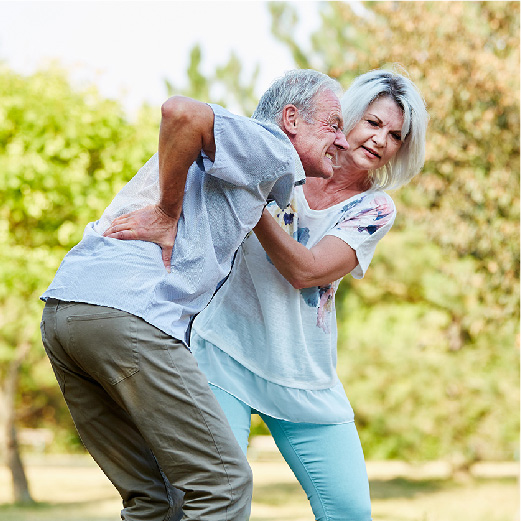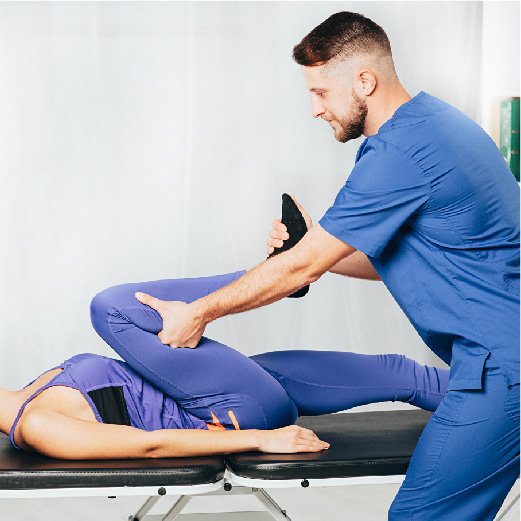What Is Hip Bursitis?
Your body has many ways of helping you move with ease, and prevent regular injury. One of the structures in your body that does this is your bursae. A bursa is a tiny, fluid-filled sack, that functions as a gliding surface to reduce friction between tissues. You will find bursae throughout your entire body, wherever it is required for a tendon or ligament to glide constantly over a bony area, ligaments or another tendon. Bursitis occurs when this bursa becomes inflamed, and pain and tenderness can result. Hip bursitis most commonly refers to the trochanteric bursa, the bursa that sits on the bony part on the outside of your hip.

What caused my Hip Bursitis?
Bursitis may be caused by injury to the area (traumatic or repetitive), a rheumatic or osteoarthritic condition, or calcification of the gluteal tendons that run over the trochanteric bursa. Rarely, it may be due to infection to the area. The most common cause of Hip Bursitis is an injury or strain. This can even occur with minor injuries or muscle imbalances.
How can you help me with my Hip Bursitis?
Your physiotherapist will take a very thorough history of your condition, in order to give you the best possible diagnosis. The physical examination will look at your spine, hip, knee, ankle and foot in order to create the best possible treatment plan. Typically, your treatment will involve some manual therapy to reduce your pain and improve your hip range of movement, as well as strengthening exercises to improve your functional level. Your physiotherapist may also educate you about your gait biomechanics or specific muscle imbalances that are contributing to your hip bursitis.
What should I do to avoid aggravating my Hip Bursitis?
- AVOID activities that aggravate your pain, until you have seen your physiotherapist
- AVOID generic strengthening activities such as squats and lunges, your physiotherapist
- REMAIN ACTIVE, while avoiding aggravating activities.
- For RELIEF, applying ice to the area may help to reduce some pain and inflammation. Wrap the ice to avoid direct contact to your skin
- RECEIVE physiotherapy care to get your joints, ligaments and muscles performing to their optimum level
Keep good care of your body and your physiotherapist will continue to monitor your condition. Once your Hip Bursitis has resolved you will be able to resume your full activities without worrying about future flare-ups.


